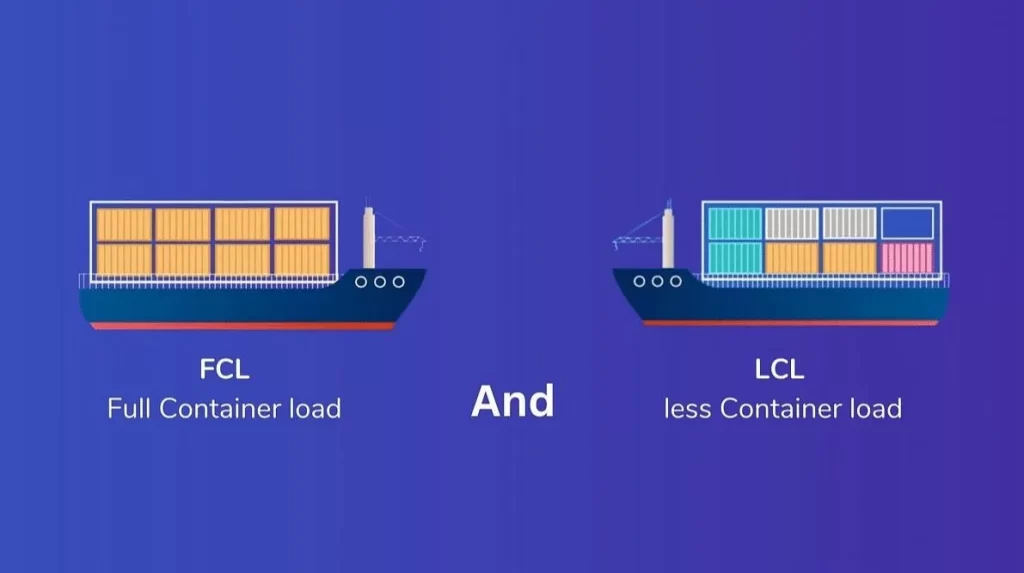- By TOP CHINA FREIGHT
- September 25, 2025
- Sea Freight, Shipping
Table of Contents
Shipping goods across the Pacific is a cornerstone of international trade, but understanding the exact sea freight time from China to USA is often a challenge. Transit schedules vary widely depending on origin and destination ports, shipping method, and customs procedures. However, with the right knowledge and preparation, importers can plan more effectively, reduce risks, and keep supply chains running smoothly.

What is the Average Sea Freight Time from China to USA?
On average, the sea freight time from China to USA ranges from 20 to 45 days. Shorter routes, such as from Southern China to the U.S. West Coast, typically take 20–25 days, while shipments to the East Coast may take 30–40 days due to longer sailing distances and Panama Canal transit.
| Origin Port (China) | Destination Port (USA) | Average Transit Time |
|---|---|---|
| Shanghai | Los Angeles | 18–22 days |
| Ningbo | Long Beach | 20–24 days |
| Shenzhen | Oakland | 22–26 days |
| Qingdao | New York | 32–38 days |
| Tianjin | Houston | 34–40 days |
As the table shows, geography matters. The West Coast is the fastest option, while East Coast deliveries require crossing either the Panama Canal or the Suez Canal, extending transit times.
Why Do Sea Freight Times Vary So Much?
Transit times are influenced by more than just distance. Several factors affect scheduling:
Port congestion:
Busy terminals in Los Angeles or New York often experience delays.
Customs clearance:
Incorrect paperwork can add days or even weeks.
Seasonality:
Peak seasons like Christmas or Chinese New Year increase waiting times.
Shipping method:
Direct routes are faster, while transshipment adds days.
Therefore, even if carriers list an “estimated sailing time,” importers must account for possible variations.
How Do FCL and LCL Shipments Affect Delivery Time?

The choice between Full Container Load (FCL) and Less than Container Load (LCL) directly impacts transit time.
FCL moves more quickly since the container belongs to one consignee. LCL, on the other hand, requires consolidation at origin and deconsolidation at destination, which can add 5–10 days.
Which Ports in China Offer the Fastest Routes?
Closest to U.S. West Coast, best for quick delivery.
High frequency of sailings, balanced option.
Longer sailing routes, generally slower to U.S. markets.
How Do Seasonal Trends Impact Sea Freight Time?
Shipping demand is not constant throughout the year. For example:
| Peak Season | Expected Delays |
|---|---|
| Pre-Chinese New Year (Jan–Feb) | +5–10 days |
| Back-to-school & holiday prep (Aug–Oct) | +7–12 days |
| Christmas season (Nov–Dec) | +10–15 days |
Planning around these periods allows importers to avoid the worst congestion. Booking early and working with forwarders who can secure space in advance are proven strategies.
Can Importers Reduce Sea Freight Time with Better Planning?
Yes, strategic planning significantly improves efficiency:
1.Book in adva nce:
Avoid last-minute arrangements during peak seasons.
2.Choose direct services:
Non-stop sailings cut several days.
3.Ensure documentation accuracy:
Delays at customs are often due to errors.
4.Work with reliable forwarders:
Established forwarders can secure space faster.
5.Track shipments digitally:
Modern platforms provide real-time ETA updates.
Therefore, time management is not just about sailing distance but about overall supply chain efficiency.
Case Study: Furniture Shipment from Ningbo to Los Angeles

A U.S. retailer imported furniture via FCL from Ningbo to Los Angeles. The expected transit time was 22 days, but due to port congestion and slow customs clearance, delivery stretched to 30 days.
To avoid recurrence, the company:
- Shifted to earlier bookings by 2 weeks.
- Used a customs broker to pre-clear documentation.
- Added real-time tracking for visibility.
As a result, subsequent shipments averaged 24 days, much closer to planned schedules.
What Future Trends Will Influence Sea Freight Time?
New environmental rules may slightly slow vessels but ensure sustainability.
Real-time cargo tracking and electronic documents reduce delays.
Faster container handling at modern terminals cuts dwell time.
More vessels can pass, reducing East Coast delays.
How Does Sea Freight Compare to Other Shipping Modes?
| Mode of Transport | Transit Time | Cost | Best For |
|---|---|---|---|
| Air Freight | 3–7 days | High | Urgent, small shipments |
| Sea Freight | 20–45 days | Low | Large, cost-sensitive cargo |
| Rail Freight (China–Europe only) | 15–25 days | Medium | Not applicable to USA |
For shipments from China to the USA, air freight is the only faster alternative, but the costs are significantly higher. Sea freight remains the most practical choice for bulk cargo.
Conclusion
The sea freight time from China to USA typically ranges from 20 to 45 days depending on the chosen ports, shipping method, and seasonal factors. While delays are sometimes unavoidable, importers can significantly improve reliability by planning ahead, choosing the right service, and ensuring compliance with customs. Moreover, future trends in automation and digitalization promise more consistent delivery schedules. Businesses that adapt now will secure smoother and faster supply chains.
Need a Shipping Quote?
If you want expert guidance and peace of mind, our team is ready to assist.
TJ China Freight offers tailored solutions to help businesses of all sizes ship more reliably from China.

FAQ
Q1:How much buffer time should I allow when planning shipments?
It is wise to allow an extra 7–10 days to cover port congestion, customs, or weather delays.
Q2:Do customs checks in the U.S. often cause delays?
Yes, especially if documents are incomplete. Working with an experienced customs broker reduces risks.
Q3:Is LCL shipping always slower than FCL?
Generally yes, since consolidation adds 5–10 days. However, LCL is more cost-effective for smaller volumes.
Q4:Can I track my shipment in real time?
Yes, most carriers and freight forwarders now offer digital tracking systems with real-time updates.
Q5:Does seasonality affect sea freight schedules?
Yes, during Chinese New Year or holiday peaks, transit times can extend by 10–15 days.
